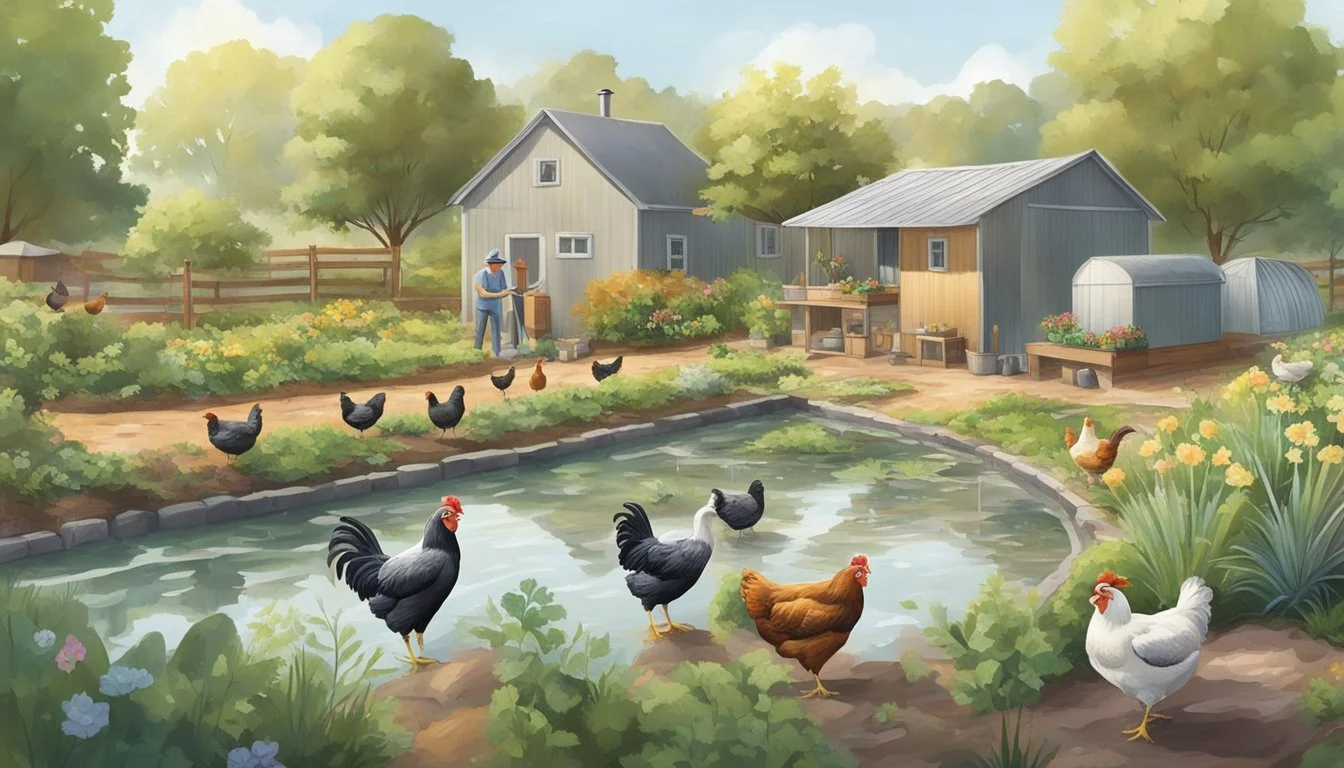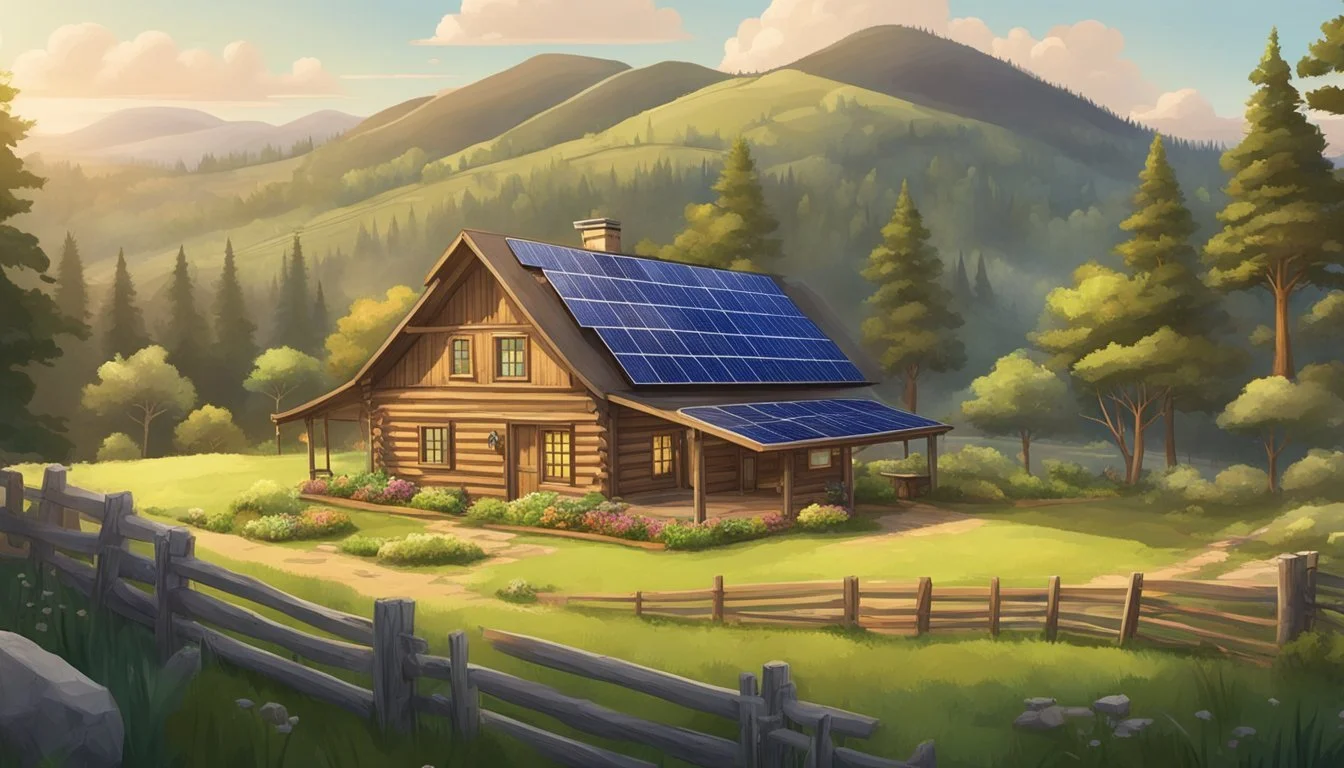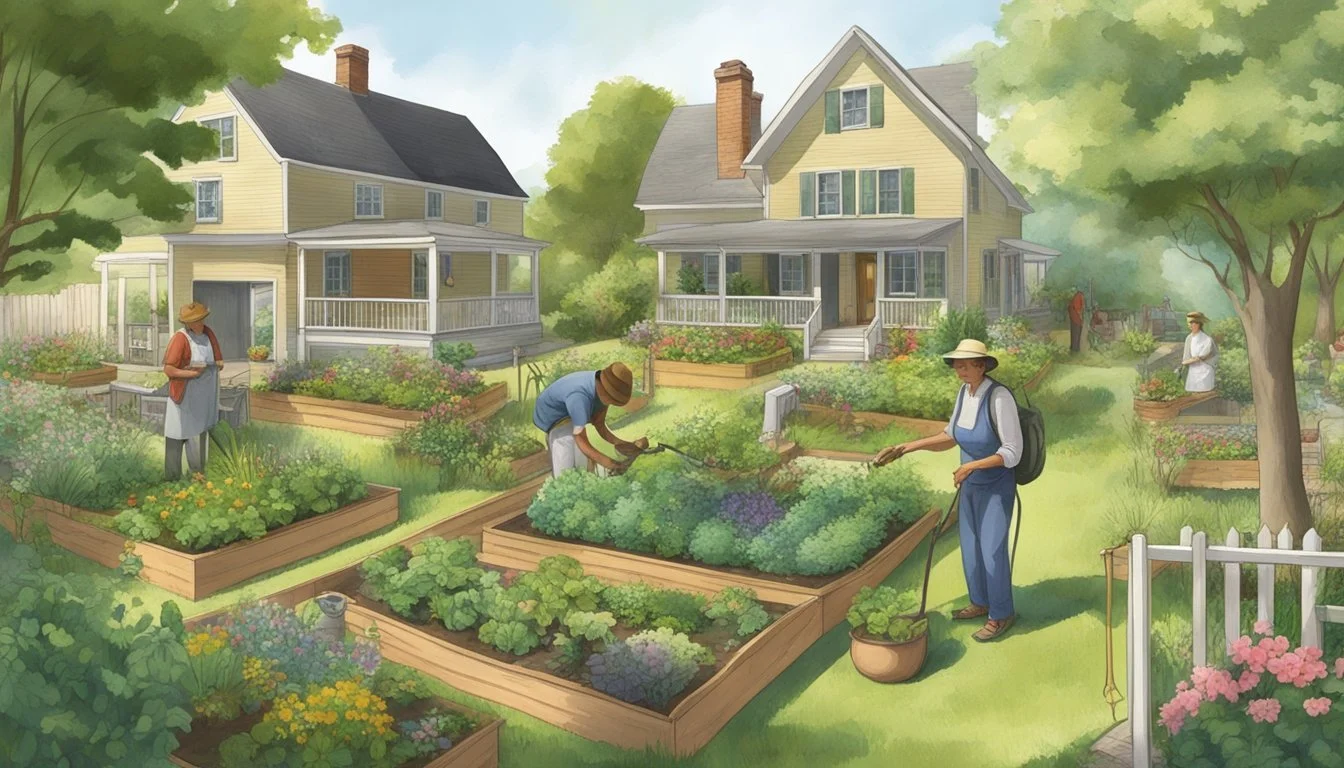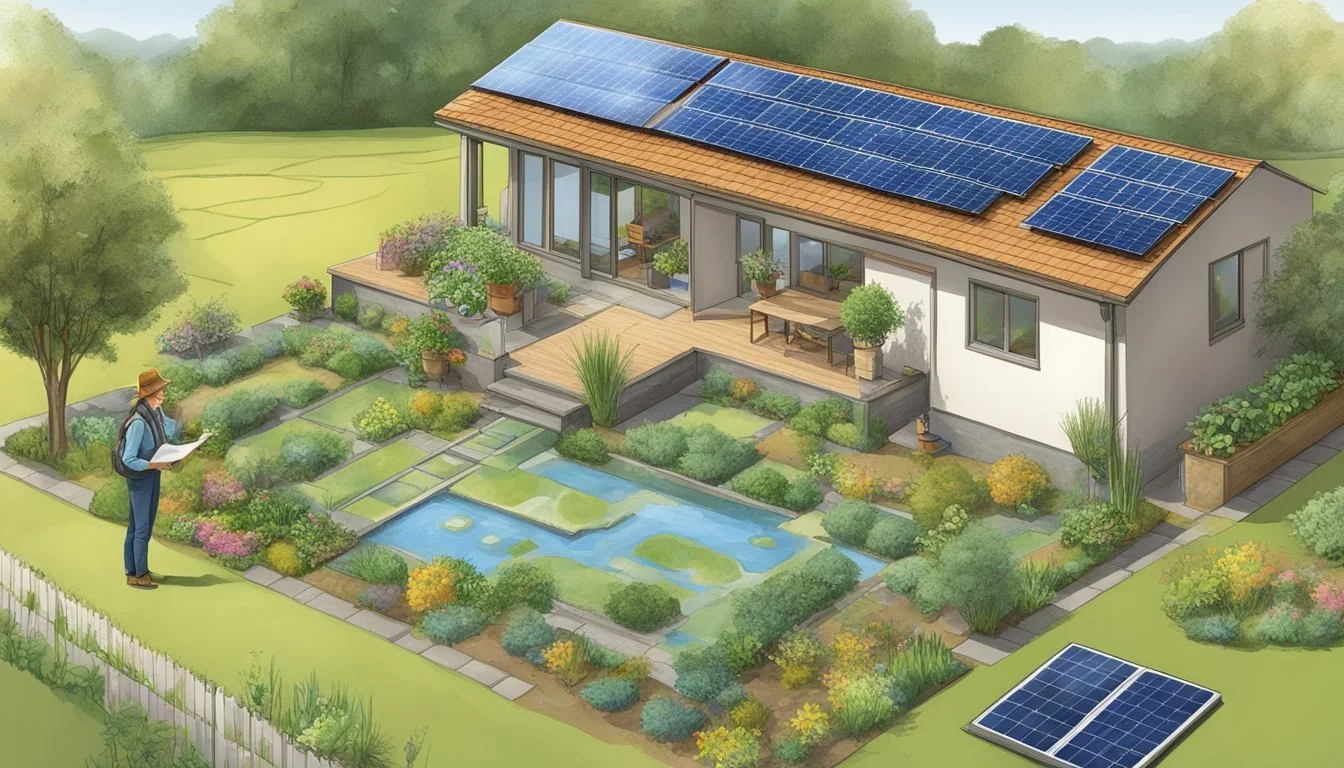Sustainable Living as a Homesteader
Embracing Eco-Friendly Practices
Sustainable living through homesteading is a multifaceted approach to self-reliance and eco-consciousness, embraced by individuals seeking to reduce their environmental impact and live simpler, more intentional lives. Homesteaders often employ sustainable practices such as organic gardening, permaculture, and renewable energy usage to create a lifestyle that aligns with the principles of sustainability. With a focus on utilizing local resources, minimizing waste, and producing what they need within their land, homesteaders exemplify a model of living that supports the health of the planet and their community.
The homesteading philosophy extends beyond rural settings; it's a transformative concept that adapts to urban and suburban environments as well. Urban homesteaders demonstrate the same sustainable living practises and may cultivate roof gardens, participate in community-supported agriculture, and employ innovative methods such as vermicomposting to manage waste. This adaptability showcases homesteading as a scalable practice for sustainable living regardless of one's geographic or economic situation.
As a comprehensive lifestyle, homesteading incorporates elements of simple living with an emphasis on DIY ethics, energy independence, and a strong connection to nature’s cycles. It revives traditional skills such as canning, natural building, and water harvesting as a means to both reduce dependency on external systems and foster a sense of empowerment. The sustainable living approach not only considers environmental benefits but also aims to enrich the homesteader's quality of life through a deeper understanding and respect for the natural world.
Understanding Homesteading
Homesteading is fundamentally about leading a self-reliant and sustainable life, intimately connected with the land and the natural world.
History and Philosophy
Historically, homesteading has been associated with the pioneering spirit, dating back to when people first settled land to live more independent and self-sufficient lives. The philosophy of homesteading is rooted in simple living, a strong relationship with the environment, and the desire for self-reliance. It addresses a yearning to return to the basics, engage deeply with the natural world, and embrace sustainable living by fostering a life less dependent on external systems.
Modern Homesteading Essentials
In the context of modern living, a homestead is more than just a dwelling; it's a comprehensive approach to life that aligns closely with sustainability and a vision of eco-friendly living. For today's homesteader, essential elements note the following key aspects:
Land: The cornerstone of homesteading, land is utilized for a mix of subsistence agriculture, wildlife habitat, and sustainable practices.
Self-sufficiency: This is achieved through means such as growing food, raising livestock, and preserving foodstuffs, reducing reliance on commercial supply chains.
Sustainable Practices: Contemporary homesteaders integrate solar panels, rainwater harvesting, composting, and other eco-friendly methods to minimize ecological footprints.
Lifestyle: Embracing homesteading and sustainable living is to adopt a lifestyle where one's actions are in harmony with the natural world, often involving a focus on local production and consumption.
Through intertwining these essentials, homesteaders craft a living space that supports self-reliance and sustainable living.
Setting up Your Homestead
When initiating the journey toward a sustainable homestead, one must carefully consider the acquisition of suitable land, the development of infrastructure, and strategic planning for various homesteading projects. Each decision must align with long-term goals for self-sufficiency and sustainable living.
Choosing the Right Land
The foundation of a successful homestead begins with selecting the appropriate parcel of land. Prospective homesteaders should prioritize soil health and water availability as these are crucial for permaculture and sustainable living. Assessing the land for its potential in supporting renewable energy sources like solar or wind is also advisable. Look for properties that offer:
Diverse terrain: suitable for different types of crops and livestock.
Adequate rainfall: but also with good drainage to prevent flooding.
Zoning laws: that are conducive to homesteading activities.
Building and Infrastructure
Sustainable infrastructure is the next pillar of setting up a homestead. It encompasses creating energy-efficient buildings, waste management systems, and water conservation mechanisms. Homesteaders should employ sustainable living practices by using local and sustainable materials wherever possible and consider the orientation of buildings for optimal energy usage. Key components include:
Housing: energy-efficient design with proper insulation.
Water systems: rainwater harvesting and graywater recycling.
Energy: installation of solar panels or wind turbines.
Homesteading Projects Planning
Developing a plan for various homesteading projects is essential to ensure that activities are aligned with the homesteader's lifestyle and sustainable living. This plan should involve:
Setting Clear Goals:
Outline specific, measurable, achievable, relevant, and time-bound objectives.
Permaculture Design:
Incorporate permaculture principles to maintain ecological balance and enhance soil health.
Skill Development:
Prioritize learning new skills that will contribute to the homestead's sustainable living aspirations, such as food preservation, animal husbandry, and organic gardening.
By adhering to these structured steps, individuals set the stage for sustainable living and self-sufficient way of life as a homesteader.
Sustainable Agriculture
Sustainable agriculture is essential for homesteaders who aim to produce food while maintaining the ecosystem's health. Sustainable living encompasses various techniques, including crop rotation, animal husbandry, and waste management, to achieve self-sufficiency and reduce environmental impact.
Gardening and Crop Rotation
In sustainable homesteading, gardening plays a pivotal role. Crop rotation is a key practice; it involves alternating the types of crops grown in a particular area with each season or year. This aids in sustainable living by:
Preventing soil depletion: Different crops have varying nutrient requirements, so rotating them helps maintain soil fertility.
Reducing pests and diseases: Changing crops regularly interrupts the life cycles of pests and diseases, minimizing their impact.
Raising Livestock
Sustainable livestock management is another cornerstone of a self-sufficient homestead. When raising animals, homesteaders should consider:
Animal welfare: Ensuring that livestock have enough space, proper nutrition, and appropriate shelter.
Pasture management: Grazing patterns should promote land regeneration and prevent overgrazing, which can lead to soil erosion.
Soil Health and Composting
Soil health is critical for the success of any agricultural endeavor and sustainable living. Composting is an efficient way to improve soil quality, as it recycles kitchen scraps and yard waste into rich fertilizer. This enhances soil structure, provides nutrients, and supports microorganisms essential for soil health. Permaculture practices also emphasize the creation of sustainable living, self-replenishing systems for growing food and reducing carbon footprint, utilizing principles like:
Building soil through natural inputs like compost and green manure.
Incorporating perennial plants and herbs that contribute to soil stability and biodiversity.
Food Production and Preservation
Food production and preservation are crucial for homesteaders aiming to achieve self-sufficiency and sustainable living. Homesteaders generally engage in various practices such as growing fruits and vegetables, raising livestock, preserving food to ensure year-round availability and even small changes like reducing the use of plastic bags have their place.
Harvesting and Storing Crops
To maximize yield from gardening, homesteaders need to understand the specific harvesting times for different crops. Proper timing can significantly increase the effectiveness of composting, a practice to enrich the soil by recycling organic waste. Once harvested, vegetables like potatoes and onions can be stored in a cool, dark place to prolong their shelf life. For crops such as grains, homesteaders should prioritize dry, ventilated storage to prevent spoilage. Crops generate oxygen as they grow helping to mitigate greenhouse gas emissions naturally.
Raising Animals for Dairy and Meat
For meat consumption, homesteaders often turn to raising chickens for eggs and meat, as they require relatively little space and can also reduce food waste by consuming kitchen scraps, thus reducing carbon footprint. Similarly, rabbits are a low-impact meat source, reproducing quickly and providing lean, healthy meat. Homesteaders may also raise goats or sheep for milk, cheese, and meat. Goats in particular are versatile animals, also useful for weed control. They vigilantly manage a homestead's milk supply, with excess often transformed into yogurt or cheese through simple home dairy processes.
Food Preservation Techniques
Preservation extends the life of homestead-produced foods and promotes sustainable living. Canning is widely used to store fruits and vegetables, with equipment being an initial investment that pays off over time. For meats, smoking and curing reduce the food's perishability. Preserving food through dehydration or freezing are additional methods homesteaders employ to ensure a steady and diverse supply of edibles throughout the year. Homesteaders might also cultivate mushrooms as a crop due to their storage ease and minimal space requirements for growing.
Living Off the Land
Living off the land is not merely a lifestyle but a commitment to self-sufficiency, which sustainable living focuses. One fully embraces the utilization of natural resources to provide for their daily needs.
Hunting and Foraging
For many homesteaders, hunting and the collection of wild edibles provide a substantial portion of their diet. Hunting often focuses on local wildlife, such as quail or deer, which can provide a significant amount of meat. Ethical hunting practices ensure population control and food resource sustainability for years to come. Foraging, on the other hand, involves the careful identification and harvest of wild plants, berries, and mushrooms, which supplements one's diet with a variety of organic and nutritious foods.
Commonly Foraged Items:
Berries (wild strawberries, blueberries, raspberries)
Mushrooms (morels, chanterelles, puffballs)
Edible greens (dandelion, nettles, wild garlic)
Water Management and Conservation
With the threat of drought from climate change, sustainable living encourages water conservation on a homestead, as it ensures a reliable supply for gardening, livestock, and domestic use. Techniques such as rainwater harvesting and the use of greywater systems can be implemented to maximize efficiency. Rainwater can be collected from rooftops and stored in cisterns or barrels for irrigation of gardening plots and fruit trees.
Water Conservation Strategies:
Greywater recycling
By managing these resources responsibly, homesteaders not only provide for their needs but also contribute to sustainable living in their local ecosystems and mitigate the growing threat of climate change in their pursuit of a more sustainable lifestyle.
Energy and Resources
In the realm of a sustainable lifestyle, a key focus is the efficient utilization of energy consumption and resources to reduce the carbon footprint. This includes harnessing sustainable energy and implementing systems for responsible water and waste management.
Renewable Energy Solutions
Solar Power: A prevalent form of sustainable energy for homesteaders is solar energy. One can install renewable energy solar panels to capture sunlight, which is then converted into electricity. This method is particularly effective for off-grid living, providing a reliable power source independent from the traditional grid as part of sustainable lifestyles.
Wind Turbines: Another alternative for energy generation is the installation of wind turbines for renewable energy. These work well in areas with consistent wind patterns and can be an excellent complement to solar systems, especially during overcast days when solar production may be lower.
Water and Waste Management
Water Conservation Practices: As part of a sustainable lifestyle homesteaders can reduce waste by employing rainwater harvesting systems, collecting precipitation for irrigation and, with proper treatment, for household use. They also integrate water-efficient practices such as drip irrigation to minimize waste.
Recycling and Composting: Homesteaders often adopt zero waste living, seeking to reduce the amount of waste produced. They:
Recycle materials like paper, glass, and certain plastic bags and other plastic products made from fossil fuels whenever possible for a sustainable lifestyle.
Monitoring food waste to establish how it can be minimized. Planning meals and using leftovers is a simple start to food waste elimination. Establish composting systems to convert food waste into nutrient-rich soil amendments. Food waste can be an ideal food source for a pig, which produces meat at little cost. Making best use of food preparation can reduce the greenhouse gas generated when cooking with electricity and gas. Some homesteads now produce methane gas from their recycled waste reducing their fossil fuels grid requirements.
A homesteader's approach to waste management focuses not only on recycling but also on reusing materials to extend their lifecycle, thus reducing the demand for new natural resources. As such it is an integral part of sustainable living and zero waste living on a homestead.
Self-Sufficient Lifestyle Practices
Embracing a self-sufficient lifestyle involves adopting practices that contribute to sustainable living and decreased reliance on external systems for basic needs. Homesteaders can achieve this through creative DIY projects and effective financial strategies.
DIY and Handicrafts
Homesteaders often turn to DIY and handicrafts to meet their everyday needs while reducing waste with recycled materials. Sewing and knitting, for example, are not just hobbies but essential skills for clothing repair and creation. They also engage in upcycling to repurpose materials, turning old glass into greenhouse panels or using recycled materials like worn-out textiles to make insulation.
Preservation Techniques: Food preservation through methods like dehydrating, canning, and fermentation ensures a stable food supply.
Seed Starting: They often begin with seed starting, nurturing plants from the very beginning to establish a reliable harvest.
Raising Livestock: Small-scale livestock keeping, such as caring for pygmy goats, contributes to self-sufficiency by providing meat, milk, and even manure for composting.
Cultivating Microgreens: Growing microgreens offers a compact, nutrient-dense crop that can be cultivated indoors year-round.
Reuse and Repurpose: With resourcefulness, items are given new life; an old plastic tub made from fossil fuels might become a garden planter, and scrap lumber transforms into furniture.
Financial Management and Bartering
Financial management is vital for a self-sufficient lifestyle; careful budgeting and investment in quality tools and infrastructure pay off in the long run. Homesteaders often practice bartering, exchanging goods and services without the need for currency, which both strengthens community ties and empowers economic independence in the quest for sustainable living.
Budgeting: They allocate funds carefully, prioritizing essential items like quality seeds and durable tools.
Bartering Networks: Engaging in barter networks, homesteaders might trade excess vegetables for services like carpentry.
Investing in Efficiency: Investments may go towards renewable energy sources or water-saving systems, reducing utility costs and environmental impact.
Community and Networking
In the realm of sustainable living, the significance of community engagement and networking often takes center stage. Homesteaders who harness the power of relationships and local economies position themselves for a resilient and resourceful lifestyle.
Building Relationships with Neighbors
Homesteaders understand that neighbors represent more than geographical proximity; they are essential contributors to mutual assistance networks. Building relationships with one's neighbors is a foundational practice that enhances the homesteading experience. These relationships may involve exchanging tips on permaculture design principles or sharing extra supplies that one homestead has in abundance. A table indicating possible exchanges might look like this:
Homesteader A's Surplus Homesteader B's Needs Potential Exchange Extra harvest of apples Compost materials Fruits for compost Knowledge of permaculture Seedlings Consultation for seeds
Regular community meetings can set the stage for discussing concerns like water rights, land use, and community-supported agriculture (CSA) initiatives that strengthen the local homesteady network.
Participation in Local Economy
The participation of homesteaders in the local economy can significantly influence both their sustainable living practices and that of the regional market. They typically engage in practices such as selling handmade goods at farmer's markets or offering permaculture design services. In towns like Austin, Texas, known for its vibrant local economy, a homesteader could contribute to and benefit from the established local food systems. They might participate in seed swaps, tool lending libraries, or barter services with other producers, reinforcing the backbone of a local economy predicated on trust and reciprocity.
Farmers' Market Engagement Examples:
Selling: Jams, heirloom vegetables, or handcrafted furniture.
Purchasing: Locally-sourced lumber, or organic feed for livestock.
Learning: Attending workshops on natural building techniques or regenerative agriculture.
Planning for the Future
When embarking on a sustainable living homesteading journey, a well-devised plan is crucial for success. The homesteader must be visionary in setting long-term objectives, taking external threats such as climate change into account in their quest for a more sustainable lifestyle.
Setting Goals and Vision
A homesteader's vision serves as the compass for their journey; it defines the desired final state of their sustainable living quest. Setting clear, achievable goals for a more sustainable lifestyle is the first step towards making that vision a reality.
Short-term Goals: These might include establishing a garden, installing solar panels, or beginning a compost system within the first year.
Long-term Goals: These are broader and could encompass achieving complete self-reliance, constructing an eco-friendly home, or developing a full-scale permaculture landscape over several years.
Every goal should align with the overarching vision of sustainability and self-reliance. Homesteaders keep their goals flexible to accommodate the learning curve and the unpredictability of living closely with nature.
Education and Continuous Learning
Education is the cornerstone of a successful homestead. It involves not only formal education but also hands-on experience and a commitment to lifelong learning.
Resources: Books, workshops, online courses, and community learning circles can provide valuable knowledge tailored to specific aspects of homesteading.
Skills: Practical skills such as gardening, animal husbandry, carpentry, and water management are essential. Homesteaders often create a plan to systematically learn and improve these skills.
Continuous learning helps homesteaders adapt to changing circumstances and implement innovative, eco-friendly solutions to sustain their homesteads for the future. It is through education that they remain informed, responsive, and resilient in their pursuit of a sustainable lifestyle.





